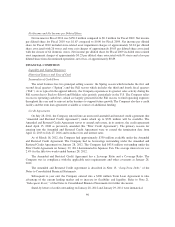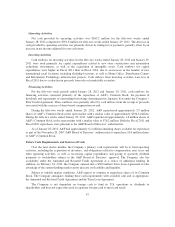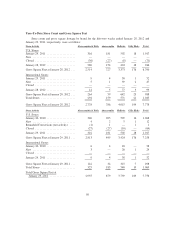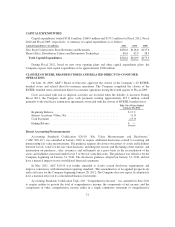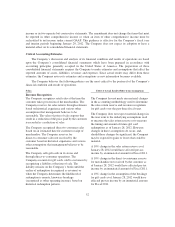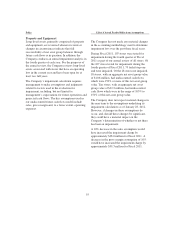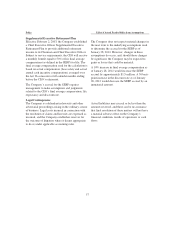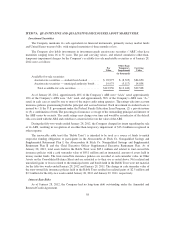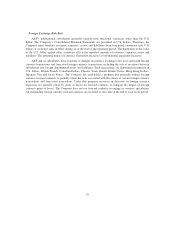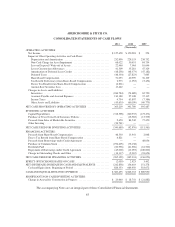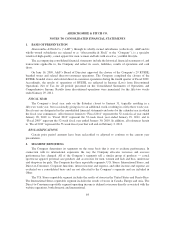Abercrombie & Fitch 2011 Annual Report Download - page 58
Download and view the complete annual report
Please find page 58 of the 2011 Abercrombie & Fitch annual report below. You can navigate through the pages in the report by either clicking on the pages listed below, or by using the keyword search tool below to find specific information within the annual report.
Policy Effect if Actual Results Differ from Assumptions
Property and Equipment
Long-lived assets, primarily comprised of property
and equipment, are reviewed whenever events or
changes in circumstances indicate that full
recoverability of net asset group balances through
future cash flows is in question. In addition, the
Company conducts an annual impairment analysis in
the fourth quarter of each year. For the purposes of
the annual review, the Company reviews long-lived
assets associated with stores that have an operating
loss in the current year and have been open for at
least two full years.
The Company’s impairment calculation requires
management to make assumptions and judgments
related to factors used in the evaluation for
impairment, including, but not limited to,
management’s expectations for future operations and
projected cash flows. The key assumptions used in
our undiscounted future cash flow model include
sales, gross margin and, to a lesser extent, operating
expenses.
The Company has not made any material changes
in the accounting methodology used to determine
impairment loss over the past three fiscal years.
During Fiscal 2011, 107 stores were tested for
impairment during the fourth quarter of Fiscal
2011 as part of our annual review of all stores. Of
the 107 stores tested for impairment during the
fourth quarter of Fiscal 2011, 79 failed step one
and were impaired. Of the 28 stores not impaired,
18 stores, with an aggregate net asset group value
of $10.6 million, had undiscounted cash flows
which were 150% or more of this net asset group
value. Ten stores, with an aggregate net asset
group value of $32.3 million, had undiscounted
cash flows which were in the range of 105% to
150% of this net asset group value.
The Company does not expect material changes in
the near term to the assumptions underlying its
impairment calculations as of January 28, 2012.
However, if changes in these assumptions do
occur, and, should those changes be significant,
they could have a material impact on the
Company’s determination of whether or not there
has been an impairment.
A 10% decrease in the sales assumption would
have increased the impairment charge by
approximately $38.0 million for Fiscal 2011. A
decrease in the gross margin assumption of 10%
would have increased the impairment charge by
approximately $39.3 million for Fiscal 2011.
55



